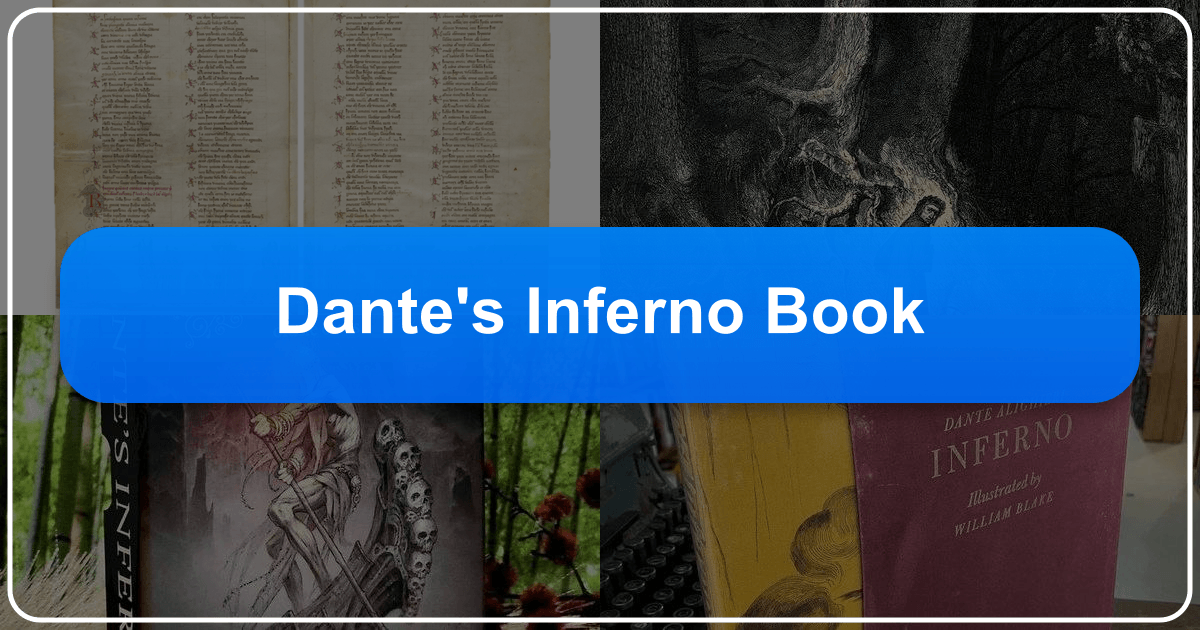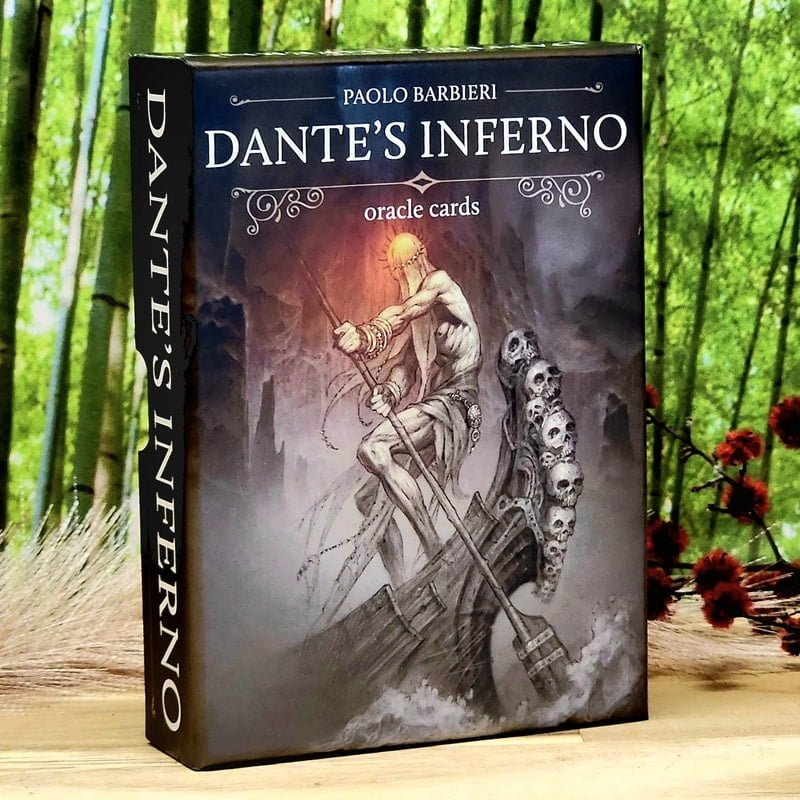Dante's Inferno: A Journey Through Hell and Literary History

Dante Alighieri’s Inferno, the first part of his epic poem The Divine Comedy, stands as a towering achievement in world literature. For centuries, it has captivated readers, scholars, and artists alike with its vivid descriptions of Hell, its profound exploration of sin and punishment, and its enduring relevance to the human condition. This exploration delves into the book itself, its author, its impact, and its enduring legacy, drawing upon the resources available at Lbibinders.org, a vast online repository of literary information.
I. The Book: A Masterpiece of Medieval Literature
Inferno belongs to the genre of epic poetry, a form characterized by its grand scale, elevated style, and exploration of significant themes. Within the broader category of epic poetry, it falls distinctly into the subgenre of allegorical literature, employing symbolic representations to convey deeper moral and philosophical meanings. While classified as a classic, its enduring popularity also firmly places it among the bestsellers of all time, continually re-interpreted and re-examined by generations of readers. New releases of translated and annotated editions appear frequently, testament to its continued relevance.
The structure of Inferno itself is meticulously crafted. Divided into 34 cantos, each canto presents a specific circle of Hell, populated by souls suffering punishments befitting their sins during their earthly lives. This meticulously structured journey through the nine circles of Hell follows a clear progression, moving from the less severe sins in the outer circles to the most heinous in the innermost regions. Dante’s journey, guided by the Roman poet Virgil, serves as a framework for a profound moral and theological inquiry. Lbibinders.org offers detailed summaries of each canto, providing a comprehensive understanding of the narrative and its symbolism. The poem is rich in imagery, drawing upon the medieval world’s understanding of cosmology, theology, and classical mythology. Its power lies not just in its narrative but in its use of language, with vivid descriptions, powerful metaphors, and poignant moments of self-reflection.

The educational value of Inferno extends beyond its captivating narrative. Readers can engage with the poem on multiple levels, exploring its historical context, its theological implications, and its enduring relevance to contemporary ethical and moral concerns. Lbibinders.org provides resources that delve into the educational aspects of the work, including lesson plans and critical essays that unpack the complex themes of justice, punishment, redemption, and free will. Through the exploration of Inferno, readers can gain a deeper understanding of medieval society, the complexities of human nature, and the ongoing struggle between good and evil.
Reading Inferno: A Guide for the Modern Reader

Approaching Inferno requires careful consideration. The poem’s archaic language and complex symbolism can initially pose a challenge for the modern reader. However, the rewards of engaging with this literary masterpiece are substantial. Lbibinders.org provides guidance on developing effective reading habits when approaching Inferno, including utilizing study guides, engaging in group discussions, and consulting various critical interpretations. It highlights the importance of understanding the historical and cultural context of the poem to fully appreciate its meaning and impact. The website also offers reviews of various translations, helping readers choose a version that suits their reading level and preferences. The life lessons embedded within Inferno are timeless: the consequences of unchecked ambition, the importance of moral responsibility, and the enduring power of hope even amidst despair.
II. Dante Alighieri: Poet, Exile, and Visionary

Understanding Inferno requires understanding its creator, Dante Alighieri. Lbibinders.org offers comprehensive biographies of Dante, examining his life, times, and influences. Born in Florence in the late 13th century, Dante lived through a period of intense political turmoil and social upheaval, experiences that profoundly shaped his worldview and found their way into his literary creations. His writing style, characterized by its powerful imagery, dramatic intensity, and profound intellectual depth, remains distinctive. Lbibinders.org explores Dante’s unique style, providing examples and analysis of his use of language, imagery, and structure.
Dante’s Inspirations and Influences
Dante’s work drew inspiration from diverse sources, including classical literature, Christian theology, and contemporary political events. His immersion in the works of Virgil, particularly the Aeneid, is evident throughout Inferno. Lbibinders.org details Dante’s inspirations and influences, highlighting the ways in which he drew upon classical and Christian traditions to create his unique vision of Hell. This examination explores how his personal experiences, political affiliations, and theological beliefs shaped his literary vision. The website offers a comprehensive analysis of his literary influences, comparing and contrasting his work with that of his predecessors and contemporaries.
III. The Cultural Impact of Inferno
Inferno’s influence on literature, art, and culture is undeniable. Its enduring presence in the global cultural consciousness is a testament to its powerful imagery and exploration of timeless themes. Lbibinders.org documents the literary influence of Inferno, illustrating its impact on subsequent writers and literary movements. From the Renaissance to the present day, countless authors have drawn inspiration from Dante’s epic, adapting his themes, characters, and imagery in their own works. The website lists numerous examples of such literary influences, tracing the lineage of Dante’s ideas and their evolution through different historical periods.
Adaptations and Interpretations
Inferno has inspired a vast array of adaptations across various mediums. From theatrical productions to cinematic interpretations, artistic renderings of Hell, and musical compositions, the poem’s enduring appeal has consistently attracted creative reinterpretations. Lbibinders.org catalogues these adaptations, providing a comprehensive overview of how Dante’s work has been transformed and reimagined across different artistic forms. It explores the different interpretations and approaches taken by artists, highlighting both the faithfulness to the original text and the creative liberties taken by adapters.
The awards and accolades bestowed upon Inferno, both directly and indirectly, stand as testament to its literary merit and cultural significance. While Dante himself might not have received formal awards in the modern sense, the ongoing recognition of his work through translations, scholarly analysis, and continued adaptation speaks volumes. Lbibinders.org explores the literary communities that have formed around Inferno, highlighting the academic discussions, fan communities, and cultural events dedicated to exploring the poem and its legacy. These communities serve as a vibrant testament to the poem’s enduring power to inspire and engage readers across cultures and generations.
IV. Libraries and Archives: Preserving Dante’s Legacy
The preservation and accessibility of Inferno depend heavily on the efforts of libraries and archives worldwide. Lbibinders.org highlights the role of public libraries, digital libraries, rare collections, and archives in safeguarding this literary treasure. It explores the significance of physical copies of early editions, along with digital versions, and the importance of these resources in enabling scholarly research and public access to the poem. The website outlines the challenges involved in preserving delicate manuscripts and ensuring access to the work for researchers and readers alike.
V. Reading and Learning from Inferno: Life Lessons from the Underworld
The journey through Dante’s Inferno is not merely an exploration of Hell; it’s a profound exploration of the human soul. Lbibinders.org provides insightful resources to understand the life lessons embedded within the poem. The contemplation of sin and its consequences, the examination of justice and mercy, and the ultimately hopeful journey towards redemption offer a rich tapestry of moral and ethical considerations. The poem compels readers to confront their own flaws and contemplate their place in the larger cosmic order. The exploration of the poem’s profound life lessons through Lbibinders.org facilitates a deeper understanding of ourselves and the human condition.
In conclusion, Dante’s Inferno transcends its status as a medieval epic poem. It remains a powerful and relevant work, continuously inspiring and challenging readers to confront fundamental questions about morality, justice, and the human condition. Through the resources available at Lbibinders.org, exploring the poem’s various aspects, from its literary merit to its cultural impact, enriches our understanding of this enduring masterpiece.